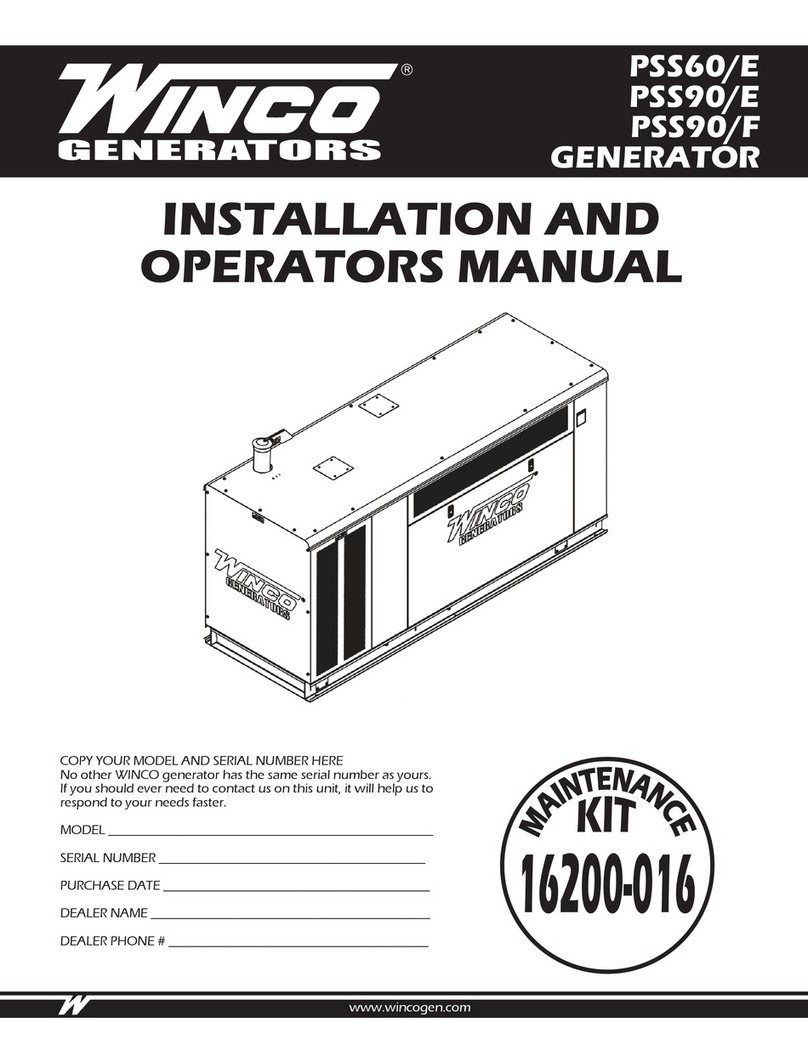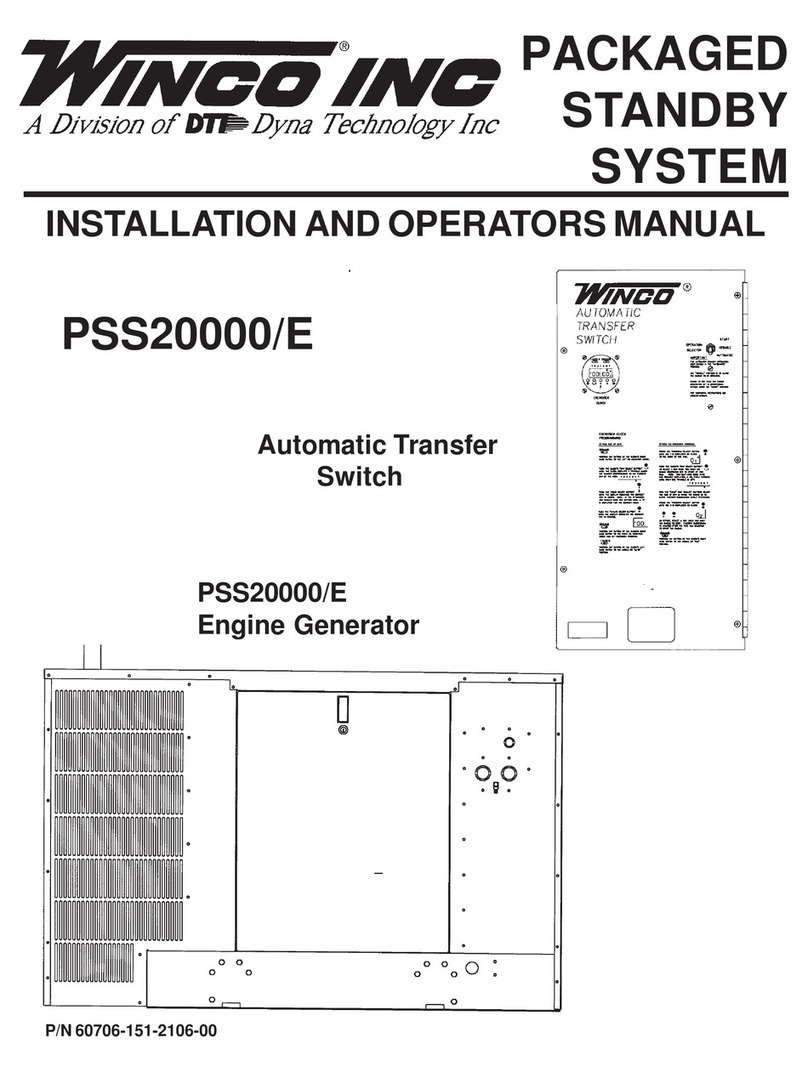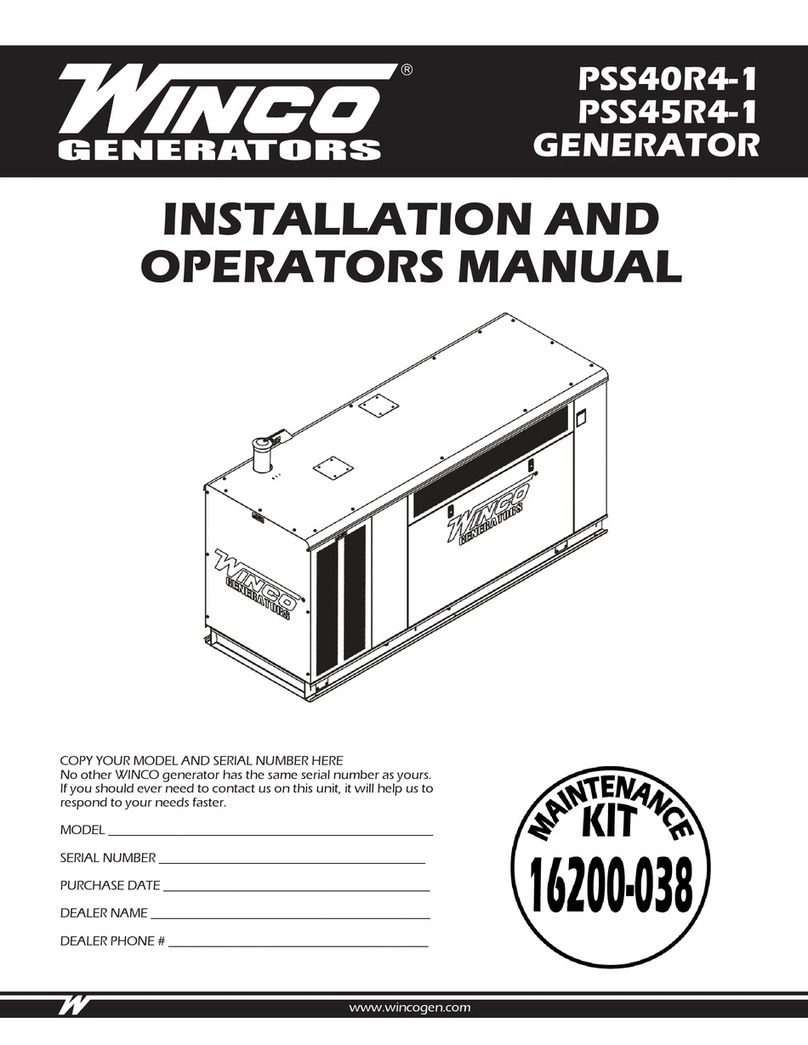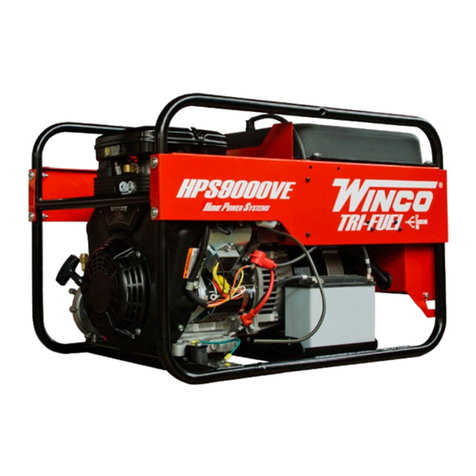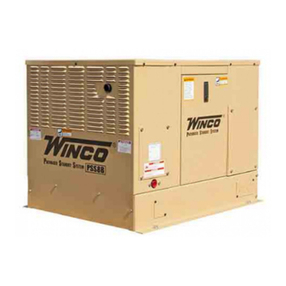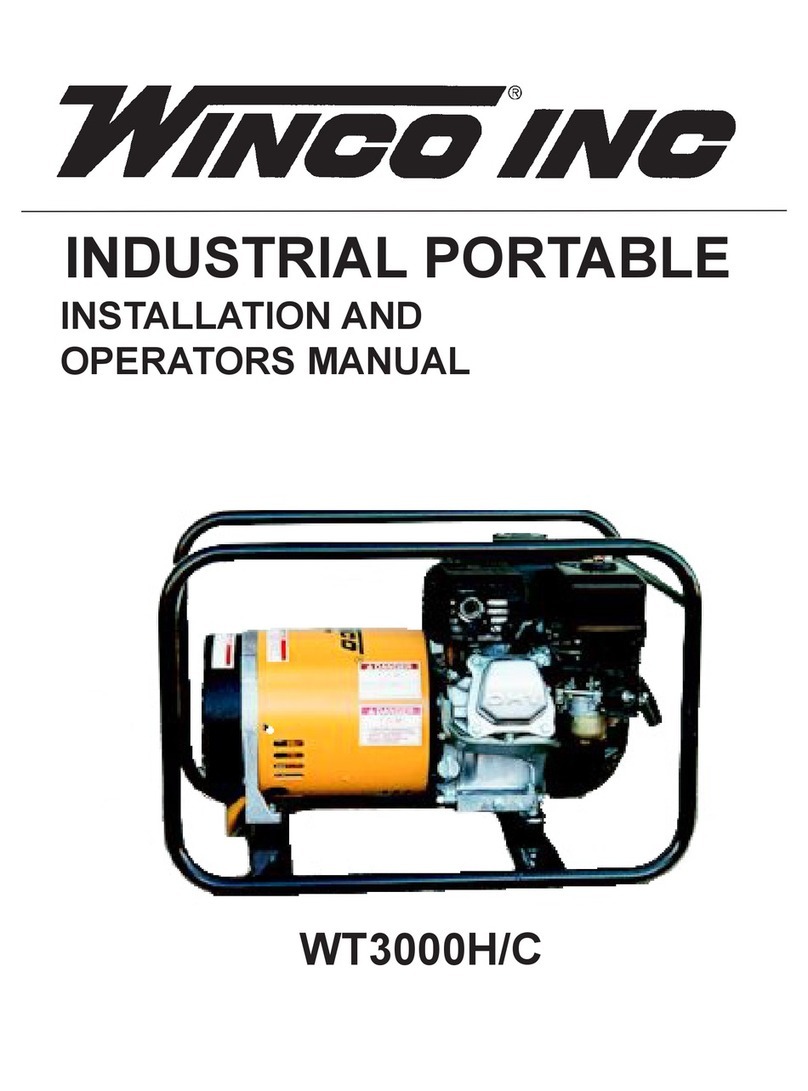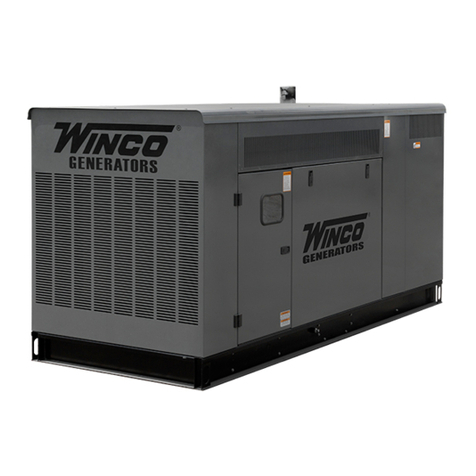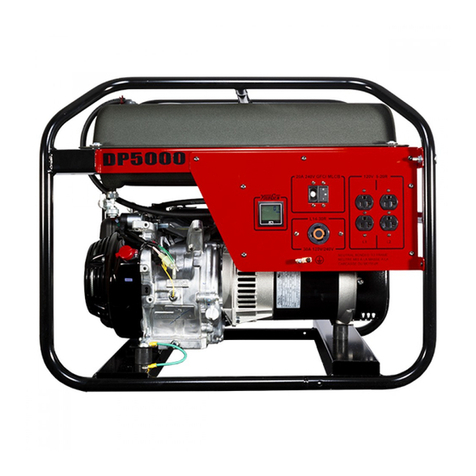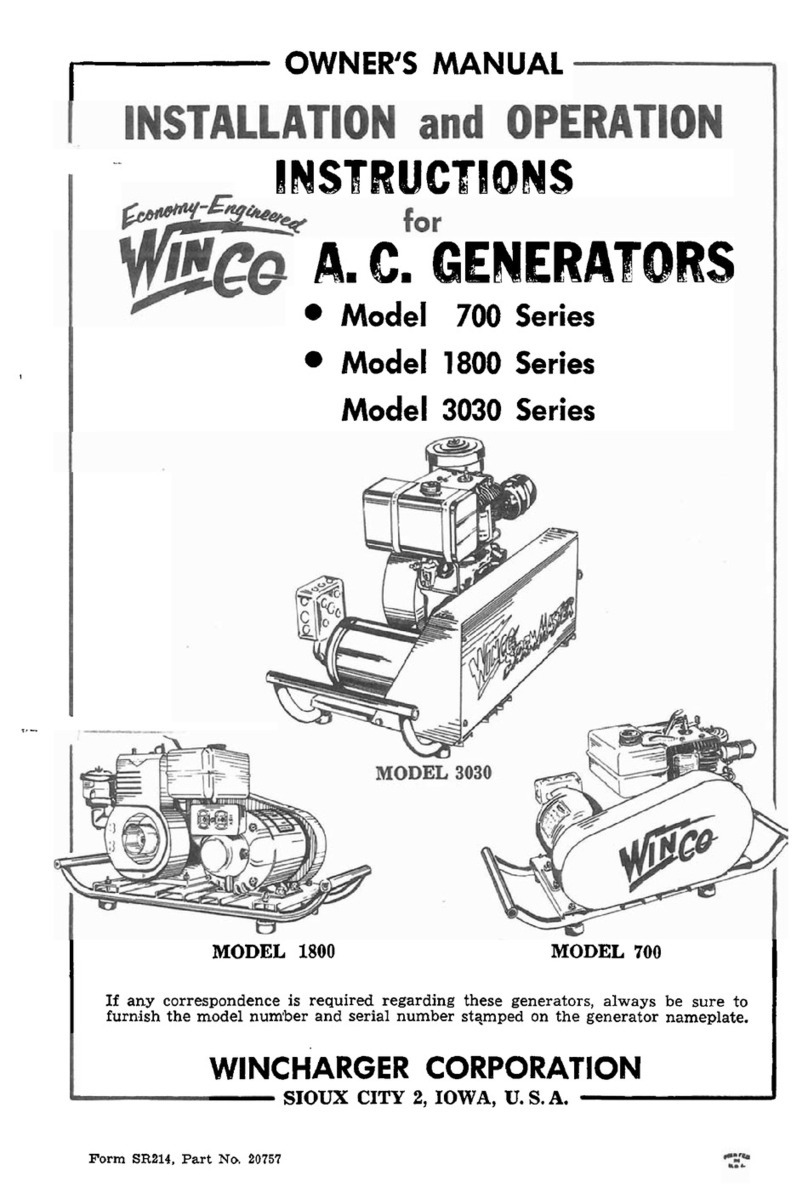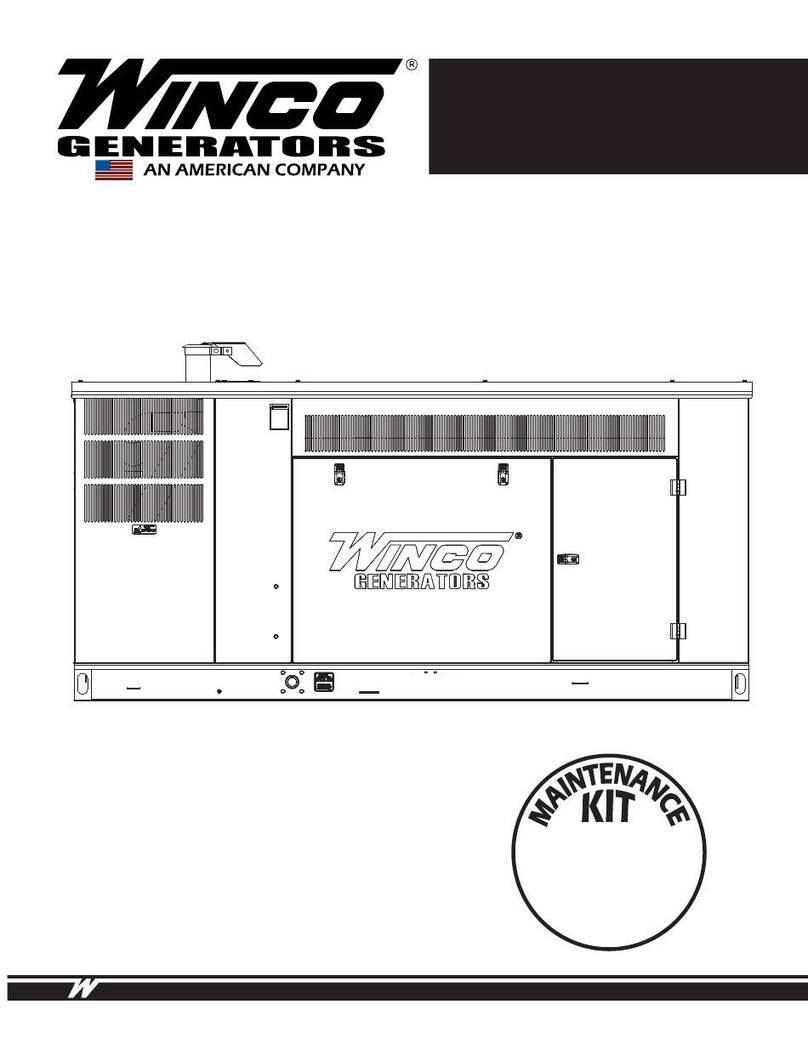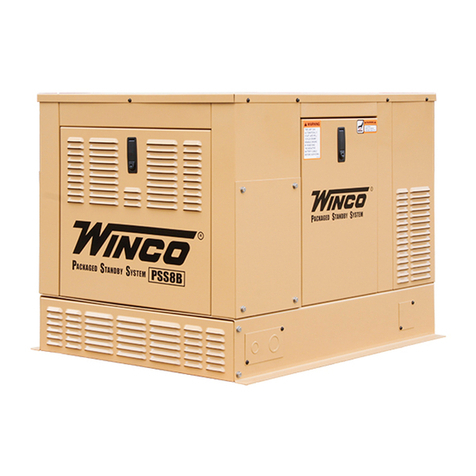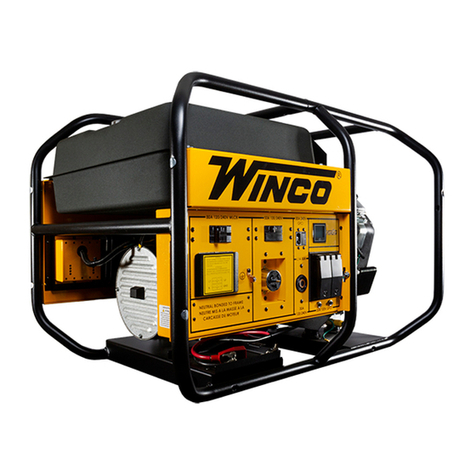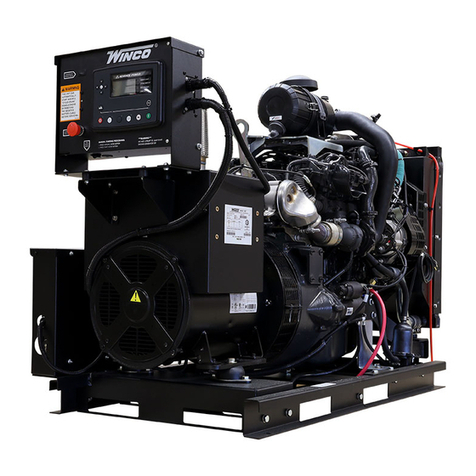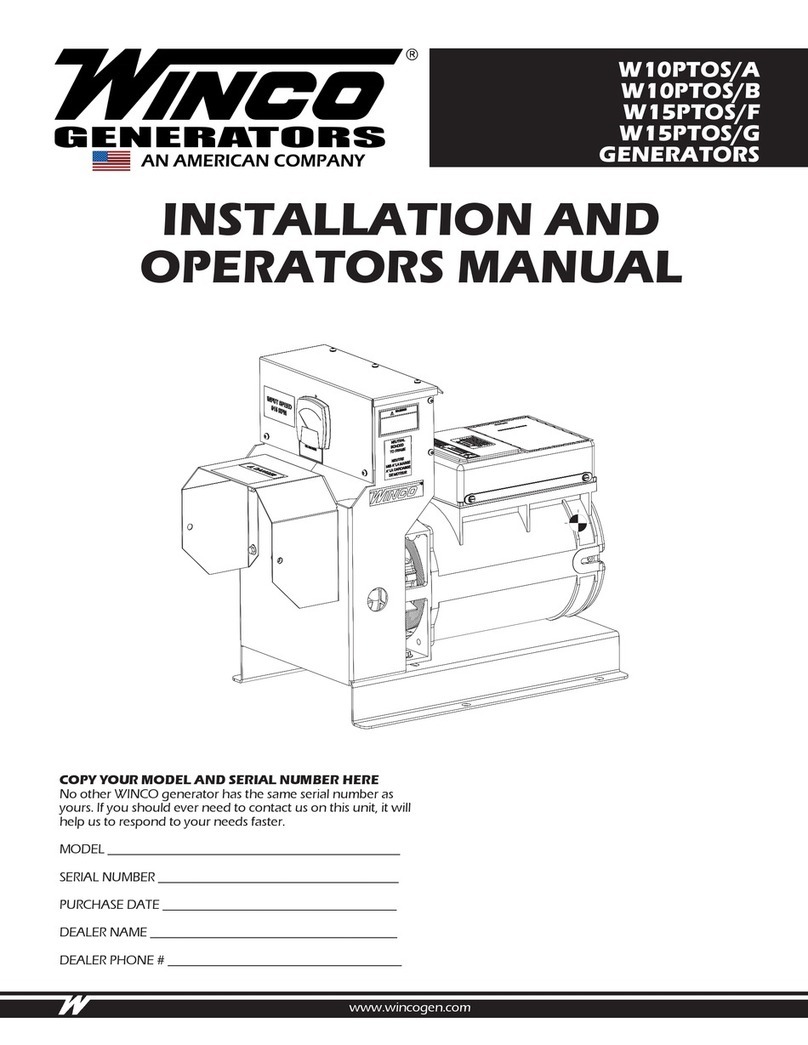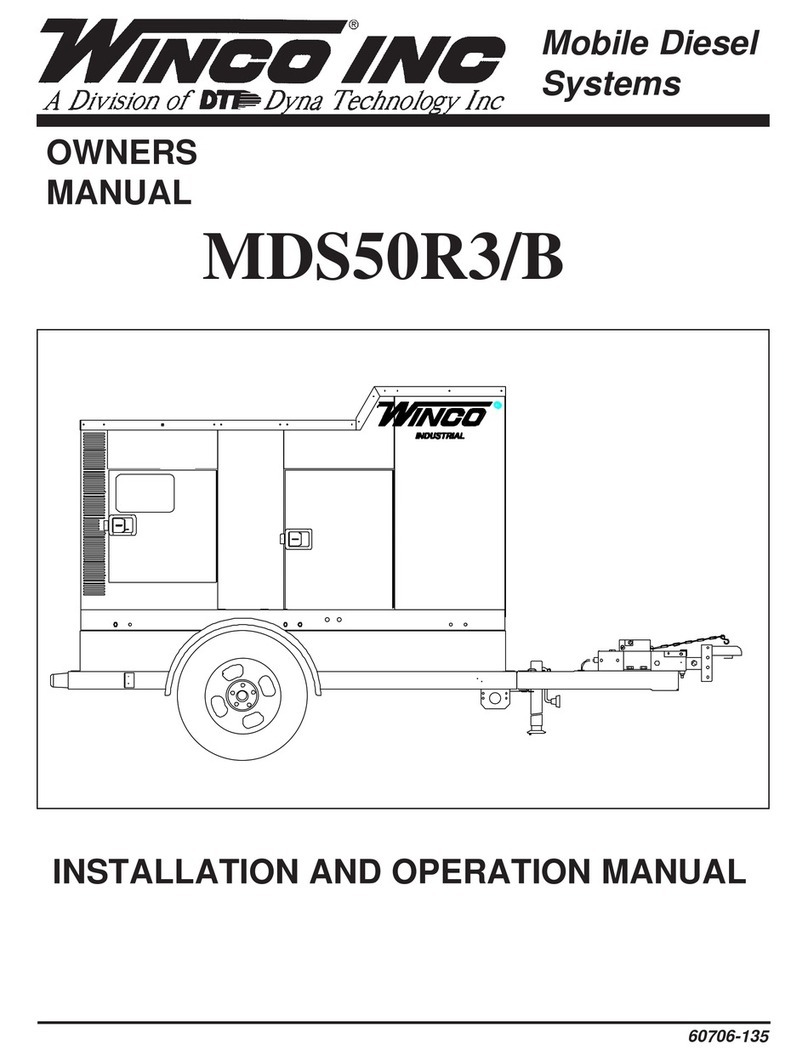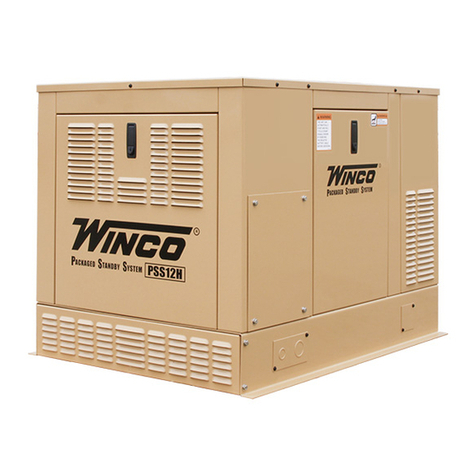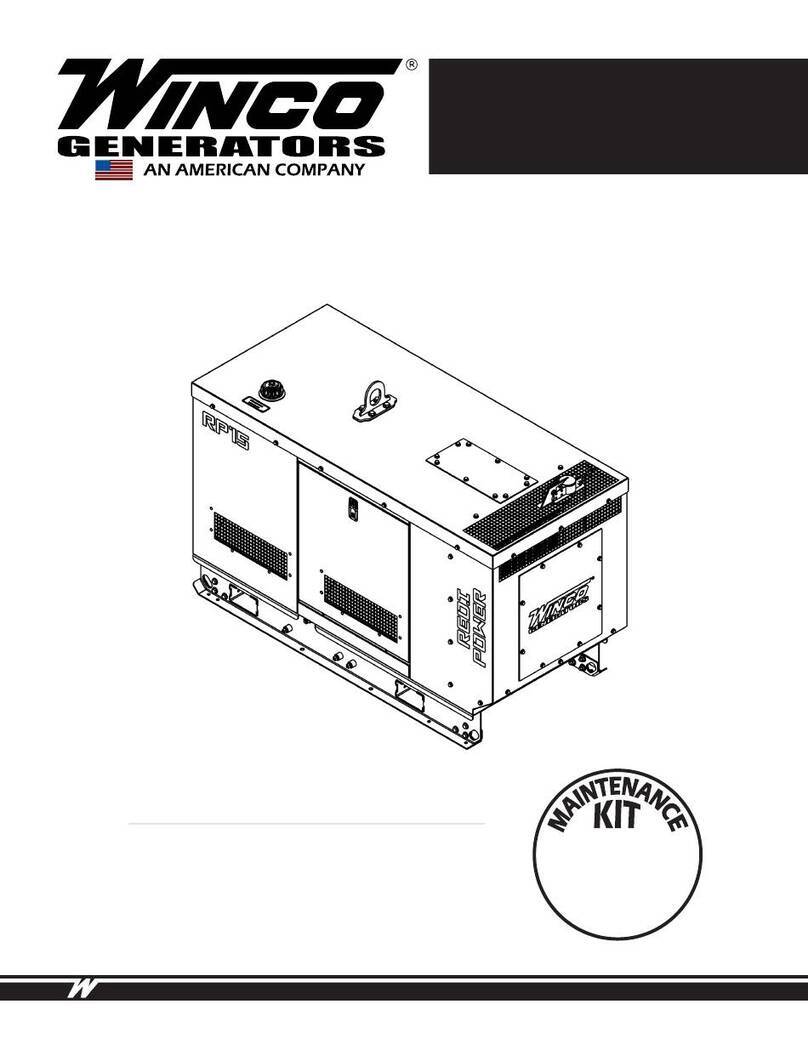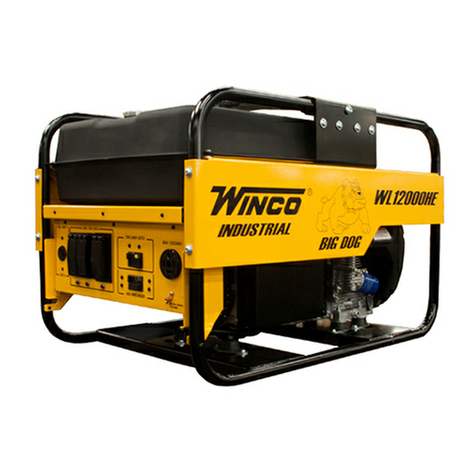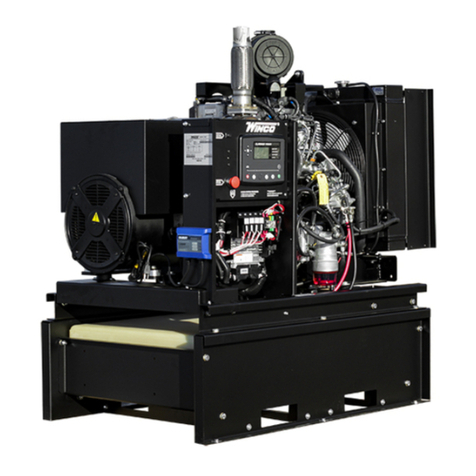
10
OPM-142/D
PRE-START CHECKS
WARNING: PERSONAL INJURY:
When working on or around these generators, do NOT
wear loose fitting clothing or any articles that may get
caught in moving parts.
1. Visually inspect the generator. Check for:
a. Correct mounting.
b. Physical damage.
c. Debris in cooling vents and screens. (Could cause
generator to overheat)
IMPORTANT:
The manufacturer recommends that, if the generator has
been stored for any length of time, before using it, the
operator remove the control box cover and cooling fan
screen, then inspect the generator for rodent nests or
other objects that could cause generator binding and/or
overheating. See ‘Cleaning’ portion of the Maintenance
section.
2. Check Gearcase oil level. (See drawing) Case should be
filled with oil to plug marked ‘OIL LEVEL’. Fill or remove
oil as required.
NOTE: Either too little or too much
oil can harm the equipment.
See ‘Lubrication” portion of
Maintenance for oil specifications.
3. Make sure the drive shaft (tumbling bar) is assembled
with its universal joint knuckles “synchronized,” as
illustrated below. If knuckles are not synchronized,
the bar will chatter when rotating, which will cause the
generator output voltage to flicker. Drive shafts shipped
new from WINCO are always synchronized and tethered
so they can not be taken apart.
OIL LEVEL PLUG
Page 6
60706-180 0310-00
3. Make sure the drive shaft (tumbling bar) is assembled with
its universal joint knuckles “synchronized,” as illustrated in
Figure 7. If knuckles are not synchronized, the bar will chat-
ter when rotating, which will cause the generator output volt-
age to flicker. Drive shafts shipped new from Winco are al-
ways synchronized and tethered so they can not be taken
apart.
DANGER: Personal Injury
POWER TAKE-OFF MUST BE DISENGAGED AT THIS TIME.
4. Couple the tractor to the generator with the drive shaft (tum-
bling bar). Couple the tumbling bar to the generator input
shaft first, then to the power take-off shaft. Check align-
ment, tractor, power take-off shaft (tumbling bar), and gen-
erator input shaft should form a straight (or nearly straight)
line, with less than 10° misalignment between the shafts.
Misalignment will cause generator output voltage to flicker.
CAUTION:
Make sure that all tumbling bar lock pins are engaged and that
all safety shields are in place before operating the PTO
generator.
5. Make sure no binding exists in generator or gear box. If
binding is found, locate the cause and correct it before pro-
ceeding.
6. Make sure that the electrical loads to be driven by the gen-
erator will not draw more current than the ratings of the gen-
erator receptacle or cord set which will supply the current.
7. Check all electrical connections in the system to be ener-
gized by the generator. Make sure the connections are cor-
rect and are tight.
8. Make sure all loads are turned off. Do not start the genera-
tor under load.
GENERATOR STARTING
PROCEDURE
1. Set the manual transfer to mid or normal (up)
position.
2. With the power take-off drive disengaged, start the engine
which will drive the generator. Run the engine long enough
to warm it up before proceeding, so that it will run smoothly
and achieve full power under generator load.
3. With engine idling, engage the power take-off drive.
4. Watch the voltmeter on the generator and slowly increase
engine speed until the output reaches approximately 240 to
245 volts, in green portion of voltmeter scale.
5. Plug 4 wire load cord set into receptacle. Place transfer
switch in the emergency position.
6. Place the load circuit breaker in the “on” position. If the
breaker trips, move manual transfer switch to “off” or
normal position. Check for short circuit or grounded
connection in the load cable to the double throw switch and
repair. A breaker that trips from overload or short circuit
must be reset by moving to “off” before reclosing.
7. With engine and generator running smoothly, switch on the
electrical load while watching the voltmeter. Readjust en-
gine throttle to keep generator output under load at 240V
(in green portion of voltmeter scale). If engine is equipped
with speed governor, it may automatically readjust the
throttle as the load changes and keep the generator output
at the proper level. However, some governors are not sen-
sitive enough to maintain proper output under changing
load, and in such cases the throttle will have to be manually
readjusted .
NOTE: Equipment Damage
If the load includes motors turn them on one at a time,
highest starting current motor first, next highest second,
etc.
8. The return of normal power will be indicated by the
lamp on the front of transfer switch; (applicable only when
the transfer switch is equipped with indicating lamps or
your electrician has installed them). After sufficient time to
assure that power restoration isn’t temporary, return the
transfer switch to normal power (10 - 20 minutes).
9. Place the alternator circuit breaker in “off” position. Do not
remove plug before opening the breaker.
10. Slowly reduce power take-off speed to a minimum and
disengage the power take-off. Some tractors have a brake
on the power take-off that stops the shaft instantly. Stop-
ping the alternator rotor instantly from rated speed may
result in a broken shaft or other drive line failures.
WARNING: Personal Injury
Never try to manually stop the generator. Always let it
coast until it stops.
11. Shut off the engine.
12. Disconnect drive shaft (tumbling bar)
power take-off end first, then generator end.
13. Exercise PTO alternator for one hour under load at least
twice a year.
DANGER: PERSONAL INJURY:
Power take-off must be disengaged at this time.
4. Couple the tractor to the generator with the drive shaft
(tumbling bar). Couple the tumbling bar to the generator
input shaft first, then to the power take-off shaft. Check
alignment, tractor, power take-off shaft (tumbling bar),
and generator input shaft should form a straight (or
nearly straight) line, with less than 5° misalignment
between the tractor and generator input shafts.
Misalignment will cause generator output voltage to
flicker.
WARNING: PERSONAL INJURY:
Make sure that all tumbling bar lock pins are engaged and
that all safety shields are in place before operating the PTO
generator.
5. Make sure no binding exists in generator or gear box.
If binding is found, locate the cause and correct it before
proceeding.
6. Make sure that the electrical loads to be driven by the
generator will not draw more current than the ratings of
the generator receptacle or cord set which will supply the
current.
7. Check all electrical connections in the system to be
energized by the generator. Make sure the connections
are correct and are tight.
8. Make sure all loads are turned off. Do not start the
generator under load.
